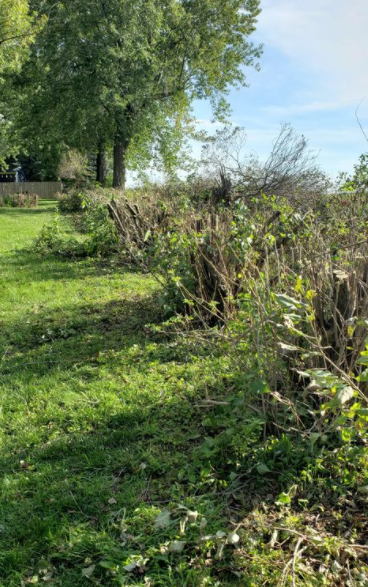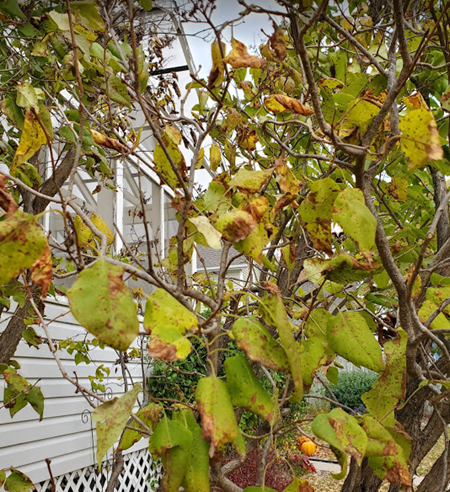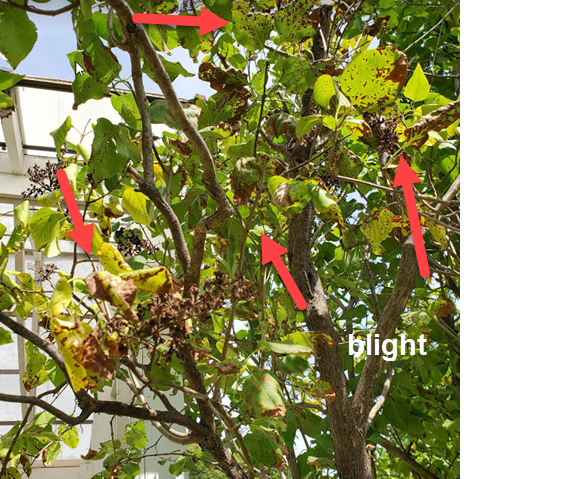Click below to listen to my 2 min. Garden Bite radio show: Blight blues on lilacs – again
Last year’s cool, wet, rainy, spring season favored development of lilac blight and boy, did we get it! Lilac blight doesn’t go away. I know many tried to clean up the foliage and prune out the blighted branches. Garden Bite listeners sent photos…

The University of Minnesota Extension directed people to prune them hard. The problem is the disease, Pseudocercospora can persist for several years on plant debris such as leaves, stems, dead flowers, bark. If you didn’t get rid of all of the plant debris (which is quite difficult) there’s a likelihood of reinfection. Mine are. But that doesn’t mean the end. You can try again.

I know some folks are heartbroken over the loss, so maybe you want to give it another year before doing anything drastic like ripping them completely out! I found further information on the University of Oregon Extension site.

They say to burn all infected parts as soon as you notice them. A spray of copper sulfate during the early spring each year should help prevent the problem before the buds begin to break. Lilac blight bacteria over-winter on diseased twigs or on healthy wood. Factors that weaken or injure plants – wounds, frost damage, soil pH, poor or improper nutrition and, this year, the drought, weaken plants and that leaves room for infection by pathogens, predisposing them to the disease.
- Plant resistant species or cultivars.
- Do not fertilize late in the growing season. (ESPECIALLY this year, 2021)
- Do not over-fertilize young plants.
